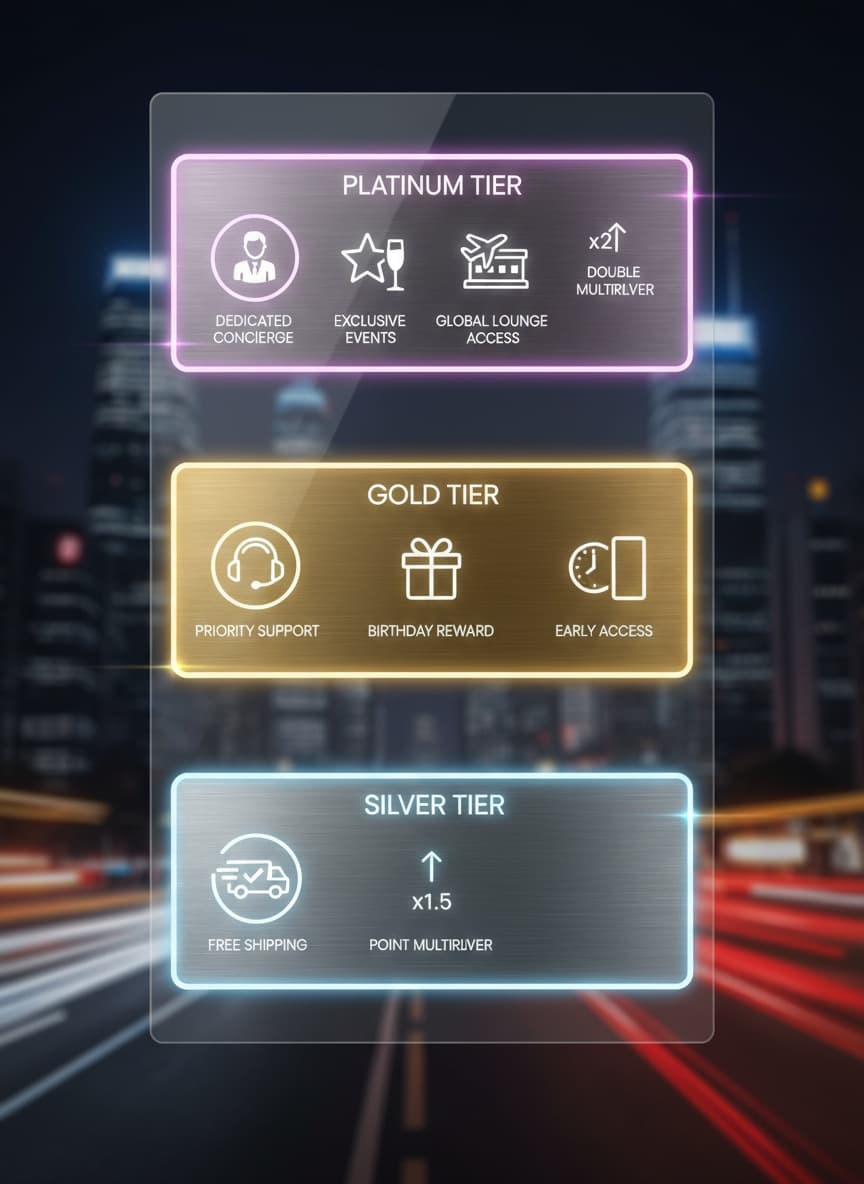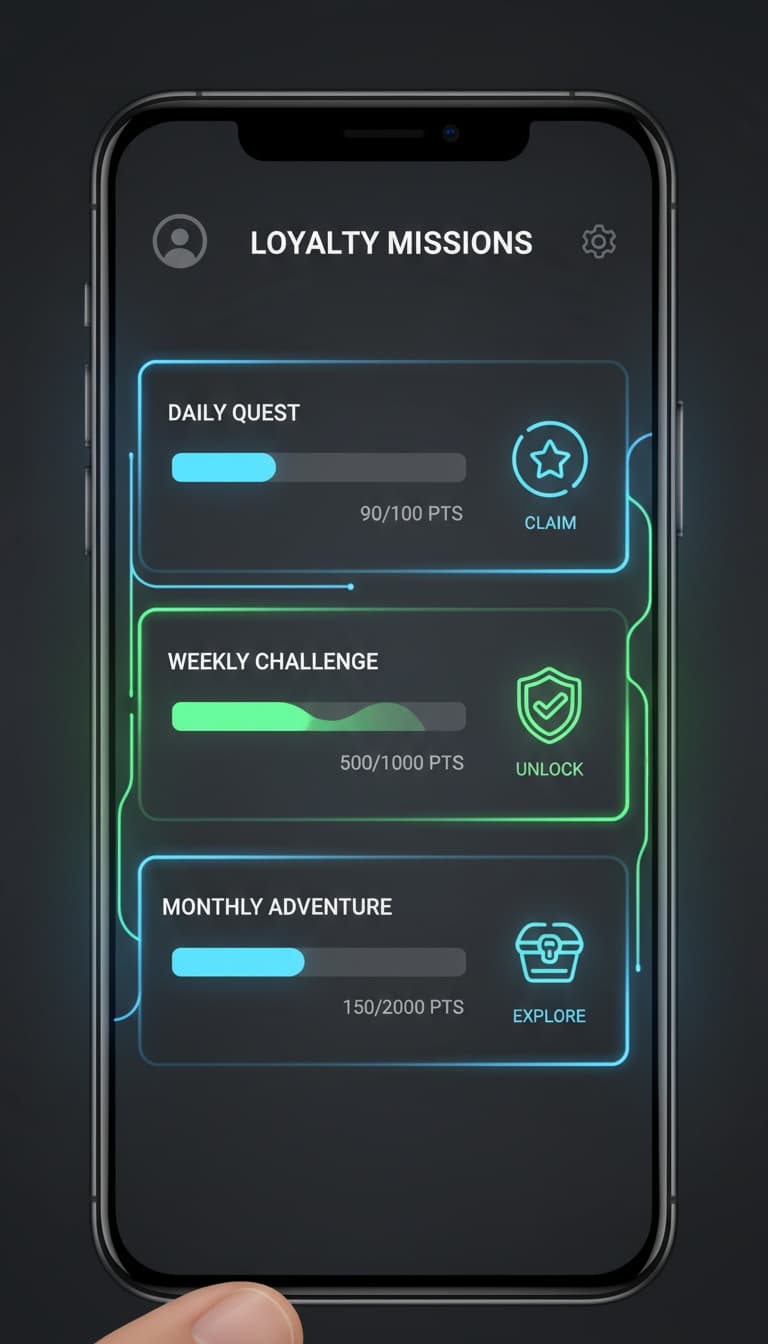A rewards program is one of the strongest engines for increasing revenue, repeat purchases, and customer lifetime value in e-commerce. When designed well it becomes a complete operating system for loyalty, where every visit, scan, purchase, or engagement action moves the customer closer to a reward, a perk, or a higher status tier. Modern shoppers expect more than simple discounts. They respond to points, VIP levels, missions, surprise bonuses, and personalized offers that feel fair and fun. A strong rewards program can differentiate your online store from generic marketplaces and price driven competitors.
To build a rewards program that actually changes behavior, you need a clear structure for earning and burning points, well defined economics, multiple reward types, VIP tier progression, micro incentives, and a measurement system tied directly to ROI. You also need ways to connect physical packaging and post purchase experiences back to your store, which is where QR codes, scan based missions, and interactive inserts amplify engagement and data collection.
Create a rewards engine that drives repeat purchases
Use QR based incentives, points, perks, and VIP tiers to build loyalty into every order.
Why rewards programs are essential for online stores
Rewards programs solve the biggest challenge in e-commerce, which is motivating customers to return. Acquisition costs continue to rise while attention is fragmented across dozens of platforms. A rewards program gives your store a built in reason to come back, because each action has value. This transforms shopping from a single transaction into a long term relationship.
Major brands use loyalty systems to stabilize revenue, improve margins, and increase frequency. Sephora uses a points and tier system to encourage continuous beauty purchases. Starbucks uses a combination of points, missions, and streaks to increase visit frequency. Nike uses engagement based rewards that connect digital activity with physical products. These brands prove that rewards programs move the needle when they combine emotional loyalty with structured incentives.
Even smaller stores can implement a lighter version of these systems. The key is to build rewards that feel achievable, relevant, and clearly valuable. If customers do not understand how to earn or redeem points, the program will fail. Clear communication and well defined economics make all the difference.
Define your program structure
Every rewards program starts with structure. You must define who can join, how points are earned, which actions qualify, how rewards are redeemed, and what long term path customers can follow. The most effective programs combine transactional rewards with experiential perks and QR based interactions across packaging.
A basic structure includes account creation, points for purchases, a catalog of rewards, expiration rules, and optional tiers. A more advanced structure includes missions, micro rewards, surprise bonuses, seasonal challenges, and referrals. Choose a structure aligned with your product category and margins.

Point economics and how to price your rewards
The economics behind your points must be sustainable. Many brands start with a simple conversion ratio such as one point per dollar and one hundred points equal to five dollars off. Others use multipliers for specific categories. The goal is to create a system where rewards feel generous without eroding margins.
Calculate your average order value and repeat purchase frequency. Then estimate how much value you can give back without hurting profitability. Many successful brands allocate between two and six percent of revenue toward rewards. High margin categories can give more. Low margin categories must rely more on experiential perks rather than discounts.
Points can also be dynamic. You may choose to give higher multipliers during product launches, seasonal promotions, or slow periods. Micro rewards such as ten bonus points for scanning a QR code on the packaging can increase engagement without giving large discounts. These small incentives are powerful because they increase participation and emotional attachment to the program.
Earn and burn mechanics that keep customers engaged
Earn mechanics define how customers accumulate points. Burn mechanics define how they redeem them. Clear mechanics are essential. If customers do not know how they can redeem their points they will stop caring. If rewards feel unreachable they will lose motivation.
Strong earn mechanics include earning points for purchases, scanning QR codes from packaging, completing missions, writing reviews, sharing the brand on social media, or participating in challenges. Each of these actions builds a behavioral loop. Scans from offline items such as inserts or product packaging also help attribute engagement, and solutions like QR Ads make attribution automatic.
Good burn mechanics allow customers to redeem points for discounts, free products, faster shipping, exclusive bundles, or VIP events. Some stores add unique perks such as donate your points to a cause or use your points to unlock limited edition packaging. These options create more emotional resonance and differentiate your brand from competitors who only offer discounts.
VIP tiers that reward consistency
VIP tiers give your most loyal customers a reason to keep progressing. They introduce status and exclusivity. Tiers can be based on spending, frequency, scans, or engagement. A typical structure includes three levels such as Silver, Gold, and Platinum, each with increasing perks.
Tiers should offer meaningful benefits. These may include higher point multipliers, early access to new products, free express shipping, exclusive support channels, or special rewards at anniversaries. Customers should clearly understand the path to the next tier and the rewards unlocked when they reach it.
QR codes can make tier progression more interactive. For example, scanning a QR code on the product box might give bonus points for the current tier or count toward progress. A code on your thank you card might unlock a surprise reward for Gold tier members. These offline interactions reinforce the sense of movement and purpose within your program.

Micro rewards that create instant gratification
Micro rewards are small incentives delivered instantly after specific actions. They are powerful because they trigger dopamine response and increase frequency of engagement. Examples include ten bonus points for scanning a QR code, a small credit for completing a mission, or a surprise coupon revealed after reading a post purchase guide.
Micro rewards improve the onboarding experience. After the first order, include a thank you insert with a QR code that grants bonus points when scanned. Another QR code inside the packaging can trigger a care guide or product tutorial that also rewards engagement. These small moments build habit loops that reinforce participation in your rewards program.
Micro rewards also increase retention. Customers who receive small bursts of value develop emotional attachment to the program. Over time this improves your repeat purchase rate and reduces reliance on paid ads to drive visits.
In app missions that make loyalty feel fun
Missions turn everyday actions into achievements. They encourage customers to complete specific tasks such as create an account, browse the new collection, scan packaging, share a referral link, or place two orders within a month. Each mission provides points or special perks.
The strongest missions are short, clear, and achievable. They should not feel like chores. You want customers to succeed quickly, because early success builds momentum. Seasonal missions such as holiday challenges or limited time drops also increase engagement and frequency.
QR codes make missions more playful. You can add unique codes to limited edition items, printed material, shipping labels, or event spaces. Each scan can trigger a mission completion, unlock a badge, or give bonus points. This turns physical environments into extensions of your loyalty system.

Integrating QR codes into packaging and post purchase journeys
QR codes turn offline moments into digital engagement and data collection opportunities. When customers scan codes from packaging, inserts, or thank you cards, each scan becomes an engagement signal and can trigger rewards or personalized offers. This strengthens your retention engine.
Include QR codes on your packaging that lead to a reorder page, a welcome mission, or a product tutorial. Add codes to the unboxing experience that offer bonus points. Add a different code on the care guide that links to a loyalty mission or a cross sell suggestion. Each scan should reward the customer and also help you track behavior.
To manage these journeys consistently, tie them to your retail engagement system. This lets you combine online and offline data, identify high intent customers, and personalize follow up messages based on scan history.
How to measure ROI of your rewards program
Measuring ROI is essential. A rewards program should be profitable and directly contribute to lifetime value. Key metrics include repeat purchase rate, average order value, redemption rate, participation rate, time between purchases, and cost per point issued. You should also track engagement signals such as mission completion, QR scans, and tier progression.
Cohort analysis is the strongest way to measure impact. Compare cohorts that joined the program with those that did not. Track their revenue contribution over time. Cohorts that use rewards regularly should show higher order frequency and greater lifetime value. If they do not, adjust your program structure or economics.
Also measure the cost of issuing points versus the incremental revenue driven by redeemed rewards. Many brands find that the perceived value of points is much higher than the actual dollar cost of offering rewards, which makes loyalty programs one of the highest ROI channels in e-commerce.
Best practices from major e-commerce brands
Leading brands share several common practices. First, they explain their loyalty programs clearly on a dedicated page. Second, they integrate loyalty into onboarding flows and checkout screens. Third, they personalize rewards and send reminders when customers are close to redeeming. Fourth, they avoid oversaturating customers with discounts and focus instead on experiential perks.
Starbucks uses missions to drive daily behavior. Sephora uses tiers and experiential perks to build community and recognition. Amazon uses points in specific categories to promote products and increase frequency. These brands combine the logic of retention with real time data and strong design.
You can borrow these strategies and scale them to your size. Start small with a simple points system. Then add tiers, missions, and QR codes. Over time your loyalty engine becomes one of the strongest assets in your business model.
Start building loyalty that compounds over time
Create points, tiers, missions, and QR based rewards that increase frequency and lifetime value in your online store.

